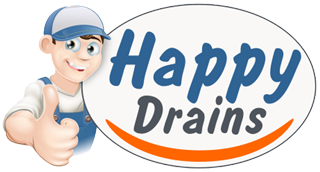A toilet can need unblocking at any time and there are a number of reasons why it could have happened; using too much toilet paper is usually the main cause of the blockage.
Unblocking a toilet is never going to be the most enjoyable chore, we feel your pain! However, it’s actually really simple when you know how. We’ve put together tips to help you get the task over with as quickly and simply as possible.
Toilet Repair Safety
The first thing you need to do is make sure it’s your toilet that is blocked – not your drain. To check this, look in the drain outside your house as it might be a larger problem. If it is definitely your toilet that is the main culprit, you can get started! Safety always comes first, here are a few things that need to be considered before taking the plunge.
- Turn off the water to the toilet at the mains- this minimises the likelihood of the toilet overflowing.
- Protect your bathroom floor with old towel or newspaper. This will help to soak up any overflowing water.
- Ventilate the room – stagnant water can produce a bad odour and gases that shouldn’t be inhaled.
- Grab some long rubber gloves and washable clothes. Toilets are notorious for germs, so you need to protect yourself from contamination.
- Never use more than one cleaning product at one time. Mixing can cause harm and we advise against this.
- Read all safety instructions and labels on the products you are planning on using.
- Call a plumber if you do not succeed in unblocking the toilet yourself. – That’s where we come in! Consulting a professional is both safer and will also save you a job too.
You’re ready to tackle the task!
Step 1 – Locate the Blockage
To locate the blockage lift the drain cover to see if the chamber is full of water. If yes, the blockage is further along the pipe. If it is empty, the blockage is in the pipe between the loo and the chamber.
Step 2 – Dissolve the blockage
Before reaching for a plunger, sometimes unblocking the toilet can be as simple as pouring hot water into the toilet bowl from a height. Using hot water can help dissolve the blockage in a more environmentally friendly way.
Step 3 – Taking the plunge
It’s commonly known that to unblock a toilet you need a plunger, but did you know there are different types? You need to use one specifically designed for the purpose. When purchasing one, ask your local DIY shop for advice.
To use the plunger – slowly push down on the plunger and position over the hole to create a vacuum. Then sharply pull the handle up to dislodge the clog. Top tip – make sure the toilet has water in, or you won’t get the right effect. Repeat as many times as needed to clear any debris and the main blockage.
Step 4 – DIY Plunger
If you don’t have a plunger to hand, why not use an alternative? Grab a wire coat hanger, unwind it so you have one piece of long wire and bend it into a curve. Push the wire up into the toilet and wiggle gently to push the blockage clear.
Step 5 – Commercial Drain cleaners
If none of the previous steps work for you, head to the supermarket cleaning aisle and pick up an unblocker- there are some good quality ones on the market. Read the label before use and make sure to keep safe as they can be harmful to your skin. Top tip- only use these if you know the blockage is organic, it could cause more damage to your toilet if it is plastic!
Step 6 – Clean up the evidence
Hopefully, these steps have done the trick. Once unblocked and flushable, give your toilet a really good scrub and clean with strong bleach, then air your bathroom!
If you are finding that you have made no progress following these steps. It’s time to call in a professional plumber. Give us a call on 0800 849 8099 or visit our contact page and we can come to the rescue.


